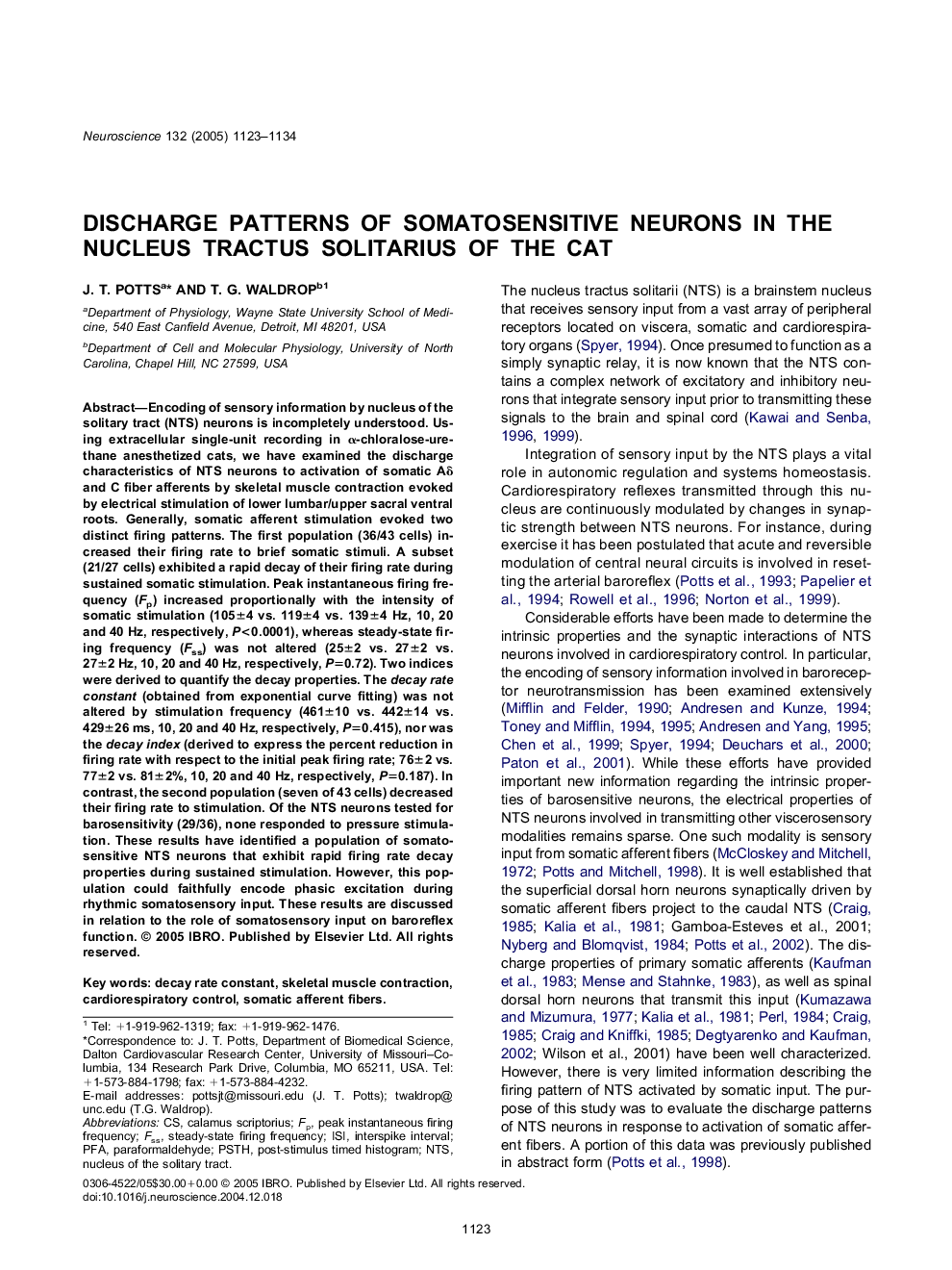| Article ID | Journal | Published Year | Pages | File Type |
|---|---|---|---|---|
| 9425887 | Neuroscience | 2005 | 12 Pages |
Abstract
Encoding of sensory information by nucleus of the solitary tract (NTS) neurons is incompletely understood. Using extracellular single-unit recording in α-chloralose-urethane anesthetized cats, we have examined the discharge characteristics of NTS neurons to activation of somatic Aδ and C fiber afferents by skeletal muscle contraction evoked by electrical stimulation of lower lumbar/upper sacral ventral roots. Generally, somatic afferent stimulation evoked two distinct firing patterns. The first population (36/43 cells) increased their firing rate to brief somatic stimuli. A subset (21/27 cells) exhibited a rapid decay of their firing rate during sustained somatic stimulation. Peak instantaneous firing frequency (Fp) increased proportionally with the intensity of somatic stimulation (105±4 vs. 119±4 vs. 139±4 Hz, 10, 20 and 40 Hz, respectively, P<0.0001), whereas steady-state firing frequency (Fss) was not altered (25±2 vs. 27±2 vs. 27±2 Hz, 10, 20 and 40 Hz, respectively, P=0.72). Two indices were derived to quantify the decay properties. The decay rate constant (obtained from exponential curve fitting) was not altered by stimulation frequency (461±10 vs. 442±14 vs. 429±26 ms, 10, 20 and 40 Hz, respectively, P=0.415), nor was the decay index (derived to express the percent reduction in firing rate with respect to the initial peak firing rate; 76±2 vs. 77±2 vs. 81±2%, 10, 20 and 40 Hz, respectively, P=0.187). In contrast, the second population (seven of 43 cells) decreased their firing rate to stimulation. Of the NTS neurons tested for barosensitivity (29/36), none responded to pressure stimulation. These results have identified a population of somatosensitive NTS neurons that exhibit rapid firing rate decay properties during sustained stimulation. However, this population could faithfully encode phasic excitation during rhythmic somatosensory input. These results are discussed in relation to the role of somatosensory input on baroreflex function.
Keywords
Related Topics
Life Sciences
Neuroscience
Neuroscience (General)
Authors
J.T. Potts, T.G. Waldrop,
